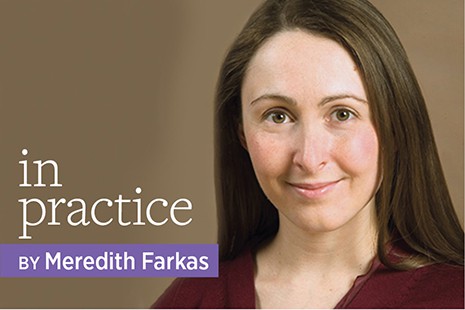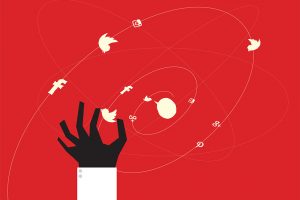
Like many in our profession, I was dismayed to hear the administration of St. Cloud (Minn.) State University has laid off four tenured faculty librarians as part of its cost-cutting retrenchment efforts. Beyond the terrible loss to the library and university community, what struck me was how the administration selectively used library data to justify its decision—data the library faculty argued was taken out of context. Circulation and reference transaction data was reported from different time periods and didn’t reflect the fact that academic librarians have increasingly focused on teaching within the curriculum, for example.
The idea that the library data we all collect and share could be used against us is troubling, and it has left me thinking about how important it is that library workers find ways to control the narrative about our own value. In an era of shrinking budgets, libraries must find ways to tell our stories, which often require us to go beyond simply reporting data. Not only have the ways that libraries serve their communities changed and expanded, but it’s become clear that the outputs we usually report are far less significant than the outcomes—the impact of our collections and services on our communities.
At my place of work, we frequently discuss how our statistics don’t capture everything we do. While we collect information on how many classes and individual students we reach with face-to-face instruction, we don’t record or report the online research guides we create to support classes, the online classes in which librarians are embedded to support and instruct students, the research assignments we have collaboratively developed with faculty, and the librarian-created learning objects that faculty use to teach information literacy. If we only gather and report data that is easy to collect, we leave out so much of the valuable work we do.
Sharing the number of reference transactions we provide each year will never have the emotional resonance that real anecdotes about valuable reference interactions do.
Beyond numbers, we also need to consider how to gather and tell stories about how patrons use the library and its effect on their lives. We have many ways to capture these stories, from surveys, to collecting or recording testimonials, to simply taking time to write down meaningful interactions we’ve had with patrons. Sharing the number of reference transactions we provide each year will never have the emotional resonance that real anecdotes about valuable reference interactions do. It’s through storytelling that library workers can engage their stakeholders and help them connect with the library’s message. The State Library of Iowa’s Telling the Library Story and the Library Story toolkit, produced by the State Library of Pennsylvania and Altoona Area Public Library, while designed for public libraries, provide valuable tips and tools that any library worker can use to better articulate their library’s narrative.
Library Snapshot Days can also provide opportunities to tell stories about your library’s value. Since the project was started in 2009 to demonstrate the collective value of New Jersey libraries, public, academic, and school libraries across the country have participated in the annual event, collecting photos, data, and stories about how patrons use and benefit from the library in a single day. This report from Chicago’s DePaul University Library in 2016 illustrates some of the ways a library can capture the richness of what happens during a typical 24-hour period. Library Snapshot Day lets us show stakeholders the breadth of the library’s services and programming and how the community benefits from the library.
If libraries simply report outputs as we always have, we run the risk of someone else dictating our worth. Telling compelling stories about what we do and the impact we have on our communities can bring new patrons into the library and secure funding to ensure we can continue our important work.


